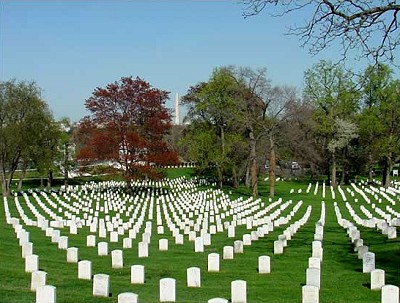Memorial Day: Remembering our fallen heroes
Today isn’t just a day that Americans across the country will gather in their backyards and hold barbecues – it’s a day that we remember and honor the hundreds of thousands of our fallen heroes, who made the ultimate sacrifice so we can enjoy the freedoms we do today, freedoms that all too many take for granted.
A little history about Memorial Day: Initially, it started off as being called “Decoration Day” to honor the Civil War dead. General Order #11 reads:
I. The 30th day of May, 1868, is designated for the purpose of strewing with flowers, or other decorating the graves of comrades who died in defense of their country during the late rebellion, and whose bodies now lie in almost every city, village and hamlet churchyard in the land. In this observance no form of ceremony is prescribed, but Posts and comrades will, in their own way, arrange such fitting services and testimonials of respect as circumstances may permit.
We are organized, Comrades, as our regulations tell us, for the purpose among other things, “of preserving and strengthening those kind and fraternal feelings which have bound together the soldiers, sailors and marines who united to suppress the late rebellion.” What can aid more to assure this result than by cherishing tenderly the memory of our heroic dead? We should guard their graves with sacred vigilance. All that the consecrated wealth and taste of the nation can add to their adornment and security is but a fitting tribute to the memory of her slain defenders. Let pleasant paths invite the coming and going of reverent visitors and fond mourners. Let no neglect, no ravages of time, testify to the present or to the coming generations that we have forgotten as a people the cost of a free and undivided republic.
If other eyes grow dull and other hands slack, and other hearts cold in the solemn trust, ours shall keep it well as long as the light and warmth of life remain in us.
Let us, then, at the time appointed, gather around their sacred remains and garland the passionless mounds above them with choicest flowers of springtime; let us raise above them the dear old flag they saved; let us in this solemn presence renew our pledge to aid and to assist those whom they have left among us as a sacred charge upon the Nation’s gratitude – the soldier’s and sailor’s widow and orphan.
II. It is the purpose of the Commander-in-Chief to inaugurate this observance with the hope that it will be kept up from year to year, while a survivor of the war remains to honor the memory of his departed comrades. He earnestly desires the public press to call attention to this Order, and lend its friendly aid in bringing it to the notice of comrades in all parts of the country in time for simultaneous compliance therewith.
Department Commanders will use every effort to make this Order effective. By Command of:
N.P. Chipman – Adjutant General
John A. Logan – Commander in Chief
Here’s more on the history of Memorial Day:
The first national celebration of the holiday took place May 30, 1868, at Arlington National Cemetery, where both Confederate and Union soldiers were buried. Originally known as Decoration Day, at the turn of the century it was designated as Memorial Day. In many American towns, the day is celebrated with a parade.
Southern women decorated the graves of soldiers even before the Civil War’s end. Records show that by 1865, Mississippi, Virginia, and South Carolina all had precedents for Memorial Day. Songs in the Duke University collection Historic American Sheet Music, 1850-1920 include hymns published in the South such as these two from 1867: “Kneel Where Our Loves are Sleeping,” dedicated to “The Ladies of the South Who are Decorating the Graves of the Confederate Dead ” and “Memorial Flowers,” dedicated “To the Memory of Our Dead Heroes.”
When a women’s memorial association in Columbus, Mississippi, decorated the graves of both Confederate and Union soldiers on April 25, 1866, this act of generosity and reconciliation prompted an editorial piece, published by Horace Greeley‘s New York Tribune, and a poem by Francis Miles Finch, “The Blue and the Grey,” published in the Atlantic Monthly. The practice of strewing flowers on soldiers’ graves soon became popular throughout the reunited nation.
President Lyndon Johnson proclaimed Waterloo, New York, as the “Birthplace of Memorial Day,” because it began a formal observance on May 5, 1866. However, Boalsburg, Pennsylvania, also claims to have held the first observance, based on an observance dating back to October 1864. Indeed, many other towns also lay claim to being the first to hold an observance.
In 1971, federal law changed the observance of the holiday to the last Monday in May and extended the honor to all soldiers who died in American wars. A few states continue to celebrate Memorial Day on May 30.

Photo courtesy: Arlington National Cemetary website.
“Never in the history of the world has any soldier sacrificed more for the freedom and liberty of total strangers than the American soldier.”
– Senator Zell Miller (D-GA), RNC – 9/1/04
